Graphene and Directed Energy Rainmaking in the UAE
The UAEREP is at the center of pushing the boundaries of weather modification technology.
The United Arab Emirates has plenty of oil and money but not enough rain. That is why they have been awarding large grants to any scientific organization or private company that can prove they can increase rainfall in the arid middle east. Each “cycle” hundreds of participants make proposals for innovative advancements in rainfall enhancement, and after a reviewal process, the best ideas are awarded millions of dollars to experiment over the UAE. If you can make it rain on them, they’ll make it rain on you!
About the NCM UAEREP
Website • 𝕏 • YouTube • Facebook • Instagram • LinkedIn
The UAE Research Program for Rain Enhancement Science (UAEREP), managed by the National Centre of Meteorology (NCM) in the UAE, is an international research initiative designed to advance the science and technology of rain enhancement by offering managed grant assistance to selected teams of researchers who present innovative ideas and project proposals relevant to the targeted research areas of each program cycle.
The UAE’s rain enhancement operations were initiated in 1990 and were developed through cooperation with organizations such as the National Center for Atmospheric Research in Colorado, USA, and the US Space Agency, NASA.
In 2005, the UAE launched the ‘UAE Prize for Excellence’ in Advancing the Science and Practice of Weather Modification in collaboration with the World Meteorological Organization (WMO). This competition was run once but has been inactive since. The prize was thereafter amended to an International Research Program for Rain Enhancement Science in 2016.
The UAE now has more than 95 networked weather stations, an integrated weather radar network, and four specialized King Air aircrafts for seeding operations. The rain enhancement operations in the UAE are carried out by an expert team of nine pilots, and a specialized scientific and technical crew - the majority of whom are UAE nationals - to monitor cloud seeding operations.
Building on the achievements and practical and scientific expertise that the UAEREP has gained through its research work, NCM set up the ‘Emirates Weather Enhancement Factory’, the first factory to produce high-quality cloud seeding materials and flares in the MENA region.
With an estimated production capacity of 21,000 hygroscopic flares annually, the facility uses environmentally friendly materials to produce flares that contain natural salts such as potassium chloride and sodium chloride.
Advancement in Chemical Weather Modification
While the majority of the world has been using Silver Iodide (AgI), Sodium Chloride (NaCL), and dry ice since cloud seeding’s invention in 1946, the UAEREP is experimenting with many new types of nanoparticles for precipitation enhancement:
Graphene Oxide, Silicon Dioxide, and Titanium Oxide Nanoparticles
The NCM said it does not use any harmful chemicals in its operations. “Our specialized aircrafts only use natural salts, and no harmful chemicals,” the organization told CNBC.
Al Mandous said the center started manufacturing its own seeding agent called nano material, a fine salt coated with titanium oxide, which is more effective than what it uses currently.
“It will give us three times more effective results than the hygroscopic flares,” he said.
The nano material is presently undergoing trials and experimentation in various atmospheres, both in the UAE and the U.S.
United Arab Emirates is using cloud seeding tech to make it rain (CNBC, 2024)
Dr. Linda Zou from the Khalifa University of Science and Technology, Abu Dhabi, UAE was awarded a grant during the first funding cycle in 2016 to investigate the use of new nanoparticle composites for use in cloud seeding.
Dr. Zou proposed coating sodium chloride in titanium oxide, silicon dioxide, and graphene oxide to produce a more effective cloud seeding agent:
Zou, Linda ”USING NANOTECHNOLOGY TO ACCELERATE THE WATER CONDENSATION NUCLEATION AND GROWTH FOR RAIN ENHANCEMENT.” Project Final Report, UAE Research Program for Rain Enhancement Science (2019).
Linda ZOU, Haoran Liang. ”3d reduced graphene oxide/sio 2 composite for ice nucleation.” Patent WO2020148644A1 (2014-2023)
“Scientists advance cloud-seeding capabilities with nanotechnology.” MIT Technology Review (2022)
”We designed and fabricated a porous nanocomposite of 3D reduced graphite oxide and silica dioxide nanoparticles.”
Laser-based Rainfall Enhancement
Dr. Guillaume Matras, Directed Energy Research Center (DERC) at Technology Innovation Institute (TII) ‘Laser-based rain triggering demonstrator with remote sensing technology’, being awarded a 5th Cycle grant by UAEREP, and more.
Our project aims to evaluate and demonstrate the feasibility of inducing rain formations through the use of plasma channels generated by intense laser pulses. Building on pioneering research, we will conduct thorough investigations and experimental work in laboratory. At the same time, we will strive to replicate the process in outdoor environments using a customized mobile pulsed laser system that we will develop, supplemented with a remote sensing system.
One-on-one with Our UAEREP 5th Cycle Awardees: Dr. Guillaume Matras
Electric Weather Modification: Cloud Ionization
I first covered cloud ionizers back in 2014 and they are only becoming more popular. The UAE has had several companies operating cloud ionizers from the ground in addition to electrifying clouds via drones.
Drones electrically seed clouds in United Arab Emirates (2017)
Cloud Ionization, Electric Rainmaking, and Laser-guided Weather Modification
And my previous article:
Additional References
International Rain Enhancement Forum 28 - 30 January 2025, ABU DHABI, UAE
Connect With ClimateViewer

Attack Ideas, Not People
❤️ you, mean it.
Jim Lee

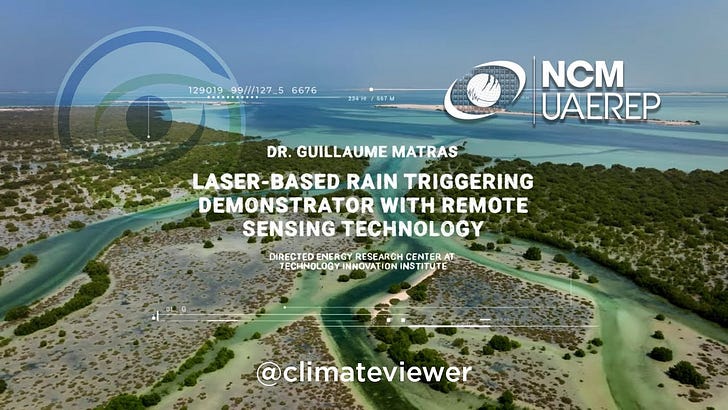



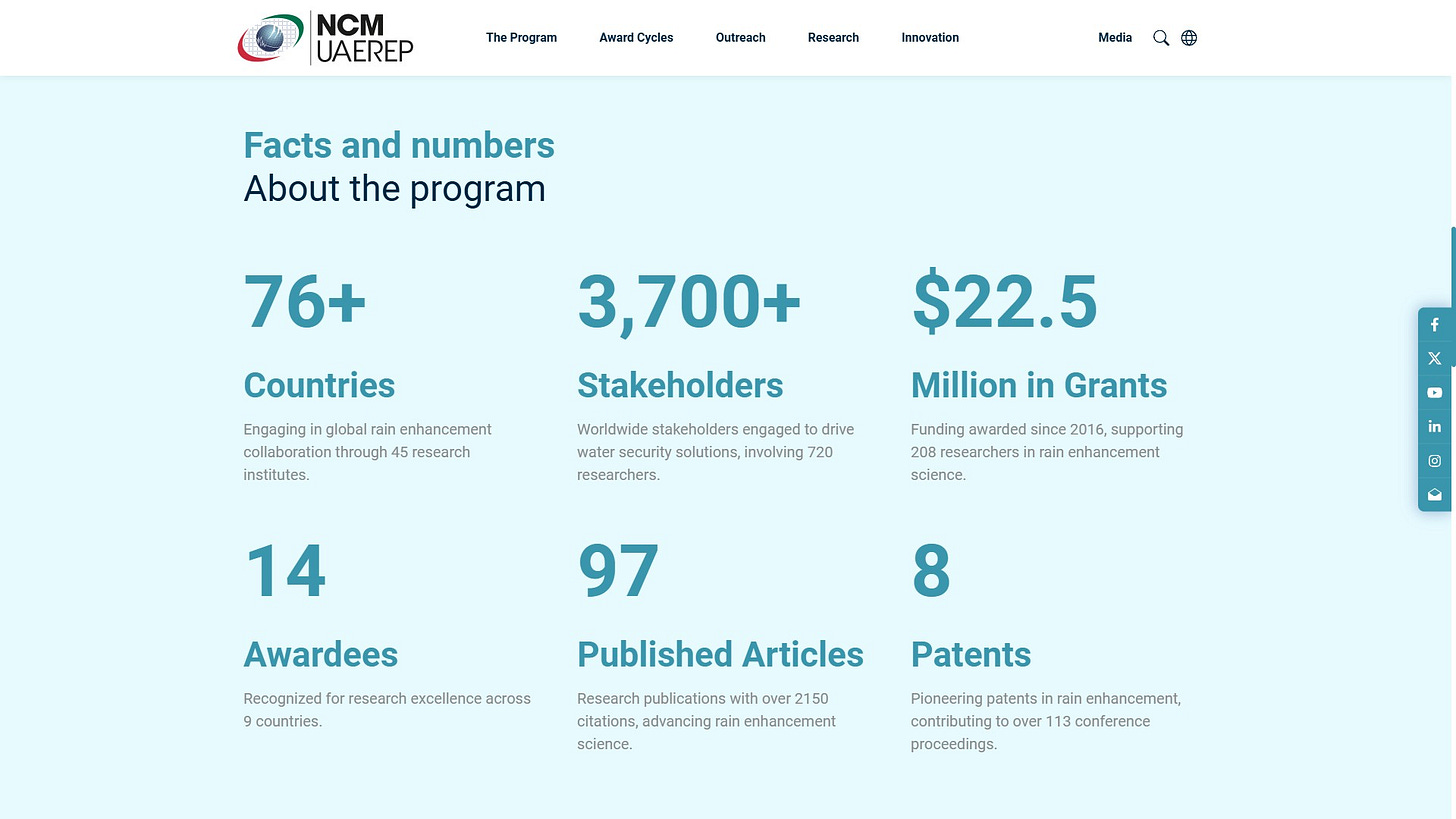

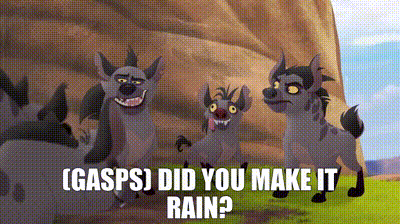
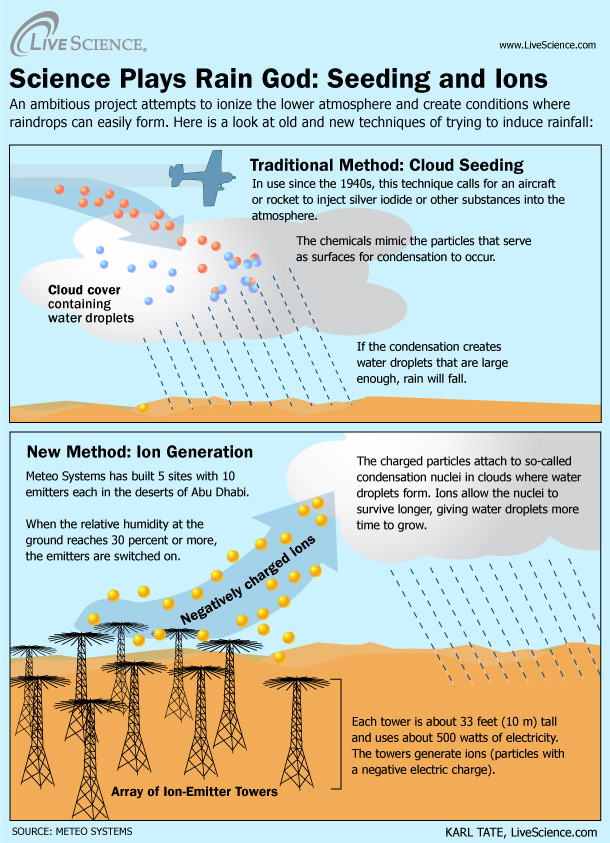

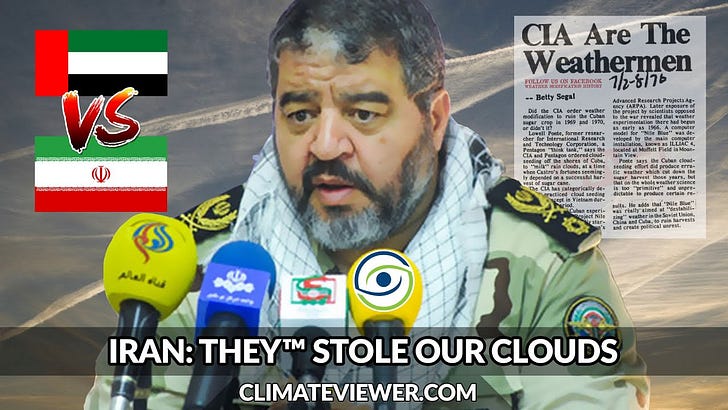
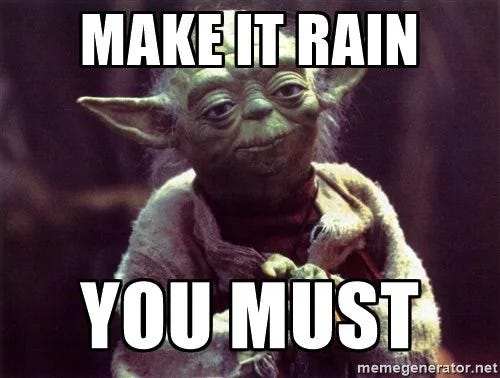
It's just laughable that our govt denies that any such thing even exists. smh
Thank you!
Jim, did you see the Space Weather article today (feb 6) noting an uptick in re-entries of starlink satellites - they are retiring 1st Generation satellites and according to the article each one produces 66 lbs (30 kg) of aluminum oxide after it burns up on its way down, which gets dumped into our atmosphere (not sure where exactly but probably the stratosphere I would think). NASA are detecting Al and other metals from "burn up" at 60,000 feet above Alaska.
Just when you thought it was just the private jets causing all the stratospheric pollution, there is another source to add into the mix.
https://spaceweather.com/archive.php?day=06&month=02&year=2025&view=view